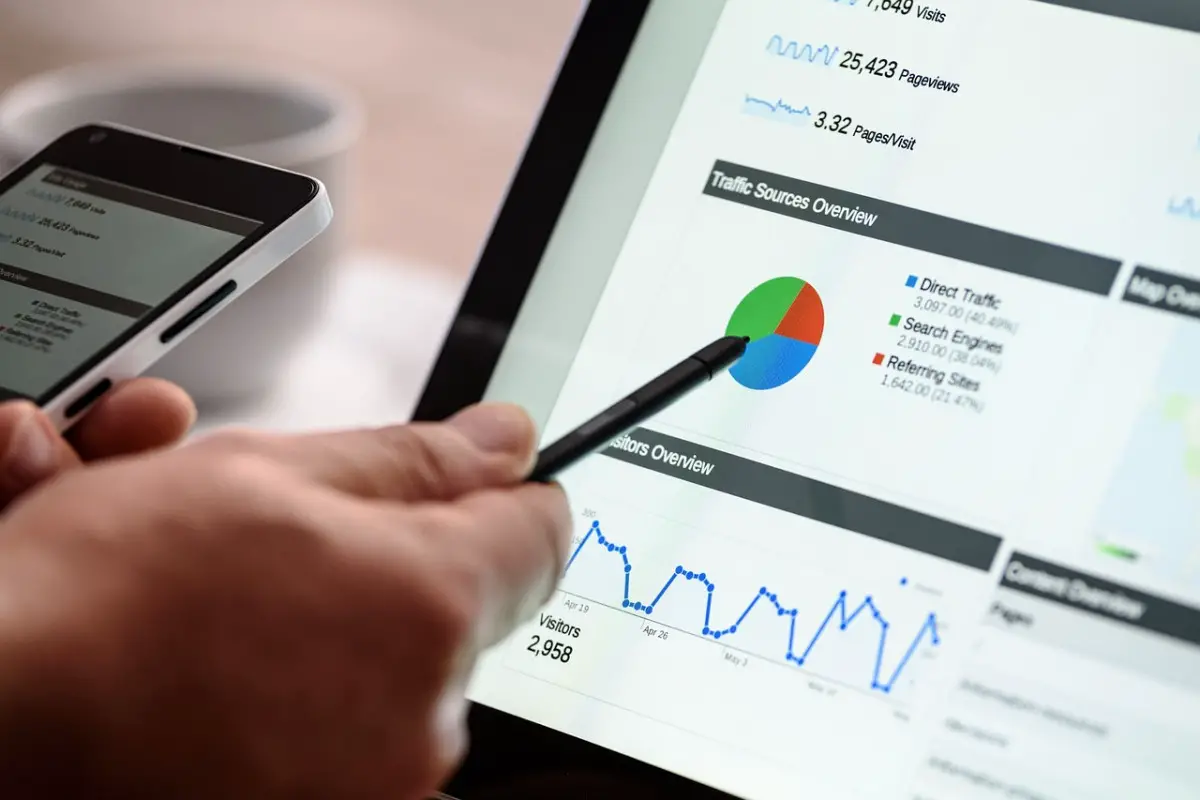
This is a guest post by Ben Richardson.
At first sight, Excel seems like a tool for hobbyists looking to crunch numbers in the back of their notebooks. However, Excel is essential in the financial world as it is the primary analytical tool used by the majority of investors around the world, from stock brokers to professional traders.
Furthermore, in the modern world, a lot of data is manipulated. With the market being influenced by macro- and micro-economic factors, billions of dollars are changing hands every day. Excel will inevitably be used at some point or another during a trader’s or investor’s daily activities.
1. Data Management
Investors and traders use Excel to manage their portfolios and analyze market trends. They need to be able to track their investments, assets, liabilities, profits, and losses over time, making Excel an essential tool for these professionals.
The ability of Excel to process large amounts of data quickly makes it an ideal choice for investors who want to track their investments across multiple accounts at once. The program allows them to create formulas that automatically update when changes in their portfolio values or other factors, such as interest rates or dividends, are paid out.
Excel’s ability to perform complex calculations makes it an ideal choice for investment professionals who need to work with numbers regularly to manage their investments properly. Investors can use formulas in Excel that combine different numbers from multiple sources into one cell, so they have everything they need in one place without having to look through all those different files separately every time they need something updated.
Some formulas can calculate the value of investments at different times to determine how their portfolio is growing over time. This allows investors to plan and make adjustments if they start losing money on certain assets they’re holding or if they need more cash than expected for other investments.
2. Budget Forecasting
Many financial analysts use Excel to create spreadsheets that project the future of their companies and industries. In many cases, these spreadsheets are used to generate forecasts or budgets for specific departments of companies. For example, if an investor is interested in buying stock in a company, they may use a spreadsheet that projects how much revenue the company will make over the next 10 years. This information helps investors determine whether or not they want to invest in a particular company and how much money they might be willing to pay for shares.
Budget forecasting is common in the corporate world. Companies often use Excel spreadsheets to create budgets for different departments, such as marketing or accounting. These budgets help them track how much each department spends each month and help them determine if they are spending too much on certain areas or not enough on others.
3. Risk Assessment

Fund managers use Excel for risk assessments and portfolio management. For example, they might apply different scenarios, such as inflation rates, currency fluctuations, and interest rate changes, to assess how these factors could impact investment returns over time.
Professionals, who are familiar with Excel basics, use this tool for calculating their risk exposure.
For example, if an investor has been trading stocks for several months and has made a profit of $5,000 per month, he can use Excel to find his ROI by dividing the total profit by the total amount invested. This gives him an overall return percent per month.
However, if he wants to know what would happen if there were a sudden drop in prices or if he wanted to know how much money he would make if prices went up 20 percent instead of dropping 10 percent, then he would use scenario analysis in Excel.
4. Investment Banking
In investment banking, many people need to use different formulas and functions to get their job done properly. Many people need to use different data analysis tools to analyze data accurately. These two things make it necessary for an investment bank employee to have access to Excel software or any other similar program so that they can work more efficiently.
5. Financial Analysis
Financial analysis uses quantitative techniques and tools to help a business make better decisions. Financial analysts are responsible for helping to develop financial statements, analyze them, and recommend changes in the company’s operations.
Excel is an excellent tool for financial analysis. You can use it to create basic financial models, perform budgeting and forecasting, and analyze historical data. It’s also possible to extend your analysis with advanced tools such as Pivot Tables and VLOOKUP formulas.
A financial analyst uses excel in the following ways:
- To create reports
- To analyze data sets
- To prepare financial models
- To make projections
Also, there are many different types of Excel spreadsheets one can use for financial analysis:
Cash Flow Spreadsheet
A cash flow forecast shows where the money comes from and where it goes in the future.
For example, a cash flow forecast could show how much money you have in your checking account at the beginning of every month, how much money will be coming in from your paycheck, what bills you have to pay each month, etc. This can help show if you have enough money to cover all your expenses without going into debt or borrowing money from an institution like a bank or credit union.
Profit & Loss Statement
This is also known as an income statement or P&L report. It shows how much revenue was brought in (sales) during a specific period and how much profit was made on those sales during that same period while accounting for all the costs associated with generating that revenue.
This is a great way to see how well your business is doing financially and make sure that it’s profitable enough to continue operating without going into debt or borrowing money from an institution like a bank or credit union.
In Conclusion
For the average user, Microsoft Excel is a great tool that appeals to all ability levels. It comes down to knowing how and when you want to use excel. For financial consultants and other financial experts, using Excel should be an integral part of their business.
Ben Richardson is a director of Acuity Training, one of the UK’s leading providers of classroom-based Excel training.
